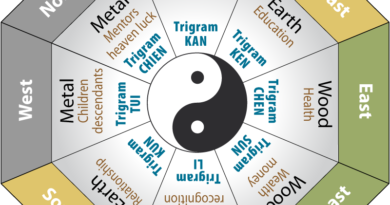FENG SHUI | An Architect Explains
FENG SHUI is an ancient and mystical Chinese art, in use for thousands of years. When a building is raised on the Earth, it affects the natural flow of energies and can create an imbalance in the surroundings. Feng Shui aims at restoring the natural balance in a person and in his surroundings and creates positive energy around his home. So, in that sense, Feng Shui is very similar to the Indian building science, “Vaastu Shastra” as they have the same goal – to create balance and a positive environment.
Feng Shui Principles: The fundamental principles of Feng Shui have been dealt with, under the following headings in a simple and easy-to-understand way. Like it’s Indian counterpart, Vaastu Shastra, Feng Shui also has a thread of common sense running through it and this has been explained in each of these pages.
Feng Shui Principles Applied To An Existing Property: The basic principles of Feng Shui can be applied to an existing building/property. In an existing building or property you can improve the positive and harmonious vibrations by applying Feng Shui principles. The steps described in this post will assist you in using Feng Shui in an existing property/building/room to enhance your life.
Feng Shui principles Applied To A Proposed Building: To ensure that a proposed building is designed in accordance with Feng Shui principles you could follow the steps explained in this post.
VASTU SHASTRA AND FENG SHUI SIMILARITY
Feng Shui is conceptually similar to its Indian counterpart “Vastu Shastra“ in that, they both try to harmonize the flow of life-energy (“Chi” in Feng Shui or “Prana” in Vastu) through the house. You can read more about Vastu Shastra here:
If you found this post useful, I would really love it if you pin it or share it. All it takes is a simple click on the “pin it” “like,” “share,” “tweet,” or Google+ buttons below the post.




